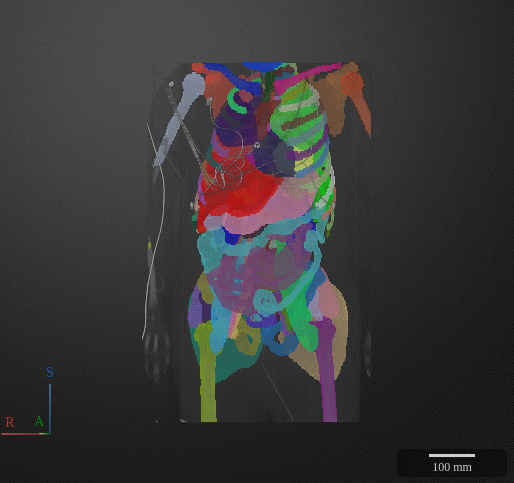Organ Donation Data Improved with HPC
The Division of Nephrology is refining data on kidney donations and clarifying CT imaging with Soteria high performance computing.

Researchers used a machine learning model to more visibly segment organs in CT scan images.
There are an estimated 37 million Americans with chronic kidney disease. Over 27 thousand Americans received transplants in 2024, with many more on the donor waiting list. The average transplant cost is close to $80,000 for Medicare patients. With numbers like these, it’s critical to improve outcomes and reduce overall costs. More data analysis on resource allocation, the risks for candidates and the viability of donor organs can help.

University of Arizona researchers in nephrology have been able to leverage high performance computing (HPC) resources in UITS Research and Discovery Technologies that are secured for working with Personal Health Information. Part of the Soteria set of resources and tools, high RAM and GPU processing time in a HIPAA-compliant HPC environment is available to Arizona researchers at no cost.
Nirav Merchant and the Arizona Data Science Initiative team introduced Vikas Pal and Ahmet Gungor from Dr. Bekir Tanriover’s Nephrology division to Soteria’s resources. When they wanted to know more about the UITS Research Data Center, Chris Reidy introduced them to Ryan Duitman, who set them up on the HPC, where they could efficiently process large, complex biomedical datasets and run advanced machine learning models. Sara Willis from HPC Consulting was also available to help with any questions on coding and best practices for running jobs.
Projects
Knowing the outcomes of previous transplants can help future patients. The United States Renal Data System provided Dr Tanriover and his team with raw data related to inpatient hospital care transplant outcomes and visits. Vikas was responsible for transforming this raw data into an analyzable format to assess post-transplant outcomes over 1, 2 and 3 years. For example, did a later heart attack affect patient survival? Analysis of this data will help doctors better anticipate and manage risks after a transplant.
The researchers are also developing an AI-driven system to automatically curate and extract critical information at scale from nearly 1 million PDF reports and 15,000 CT scans provided by the UNOS DonorNet portal. With a large data set of donor kidney anatomy, biopsy results and organ recovery details, analysis can be used to assess organ quality, potentially reducing the high discard rates of recovered kidneys.
An advanced machine learning algorithm for Optical Character Recognition (OCR) was able to extract text and tabular data from the PDFs and take it from an unorganized format to analyzable information.
Similarly, Ahmet worked with Dr. Ali Bilgin and Deniz Karakay, PhD to run an image segmentation machine learning model on over 10 TB of CT images. The model was able to more visibly segment the liver, both kidneys, pancreas and spleen in the images and calculate their volumes and other features. They are now working on incorporating the newly derived features with the UNOS dataset and making new models.
HPC Support
Sara Willis from the HPC Consulting team calls herself a Code Plumber. Vikas and Ahmet call her a superstar. Ahmet says, “Sara and Ryan have been incredibly responsive and helpful in addressing technical issues as they arose. They supported us in solving specific challenges on the Soteria platform, and their troubleshooting expertise ensured our workflows ran smoothly.” Vikas adds, “They helped me a lot—they run Soteria like clockwork. There were no serious issues, nothing they couldn’t handle.”
HPC support was instrumental in accelerating their data processing workflows and enabled them to apply advanced analytics and machine learning techniques to real-world challenges in nephrology. The collaboration played a key role in scaling up nephrology research and integrating AI tools more deeply into their projects.
The combination of Soteria’s HPC capabilities and HIPAA privacy means that researchers can perform scalable, computationally intensive analyses while ensuring that their research meets the highest standards of data privacy and security. The work of Arizona’s Division of Nephrology will dramatically expand the scale, speed and depth of biomedical research, and help translate insights from data into more personalized, equitable and effective patient care. Vikas and Ahmet are hoping these large-scale analyses will support more informed clinical decisions, improve patient access to transplant and care and contribute to better long-term outcomes for people living with kidney disease.

